Alvis Saladin
The FV601 Saladin is a six-wheeled armoured car developed by Crossley Motors[1] and later manufactured by Alvis. Designed in 1954, it replaced the AEC Armoured Car in service with the British Army from 1958 onward. The vehicle weighed 11 tonnes, offered a top speed of 72 km/h, and had a crew of three.[1] Saladins were noted for their excellent performance in desert conditions, and found favour with a number of Middle Eastern armies accordingly.[3] They were armed with a 76 mm low-pressure rifled (spin-stabilised) gun which fired the same ammunition as that mounted on the FV101 Scorpion.[2]
| Alvis Saladin | |
|---|---|
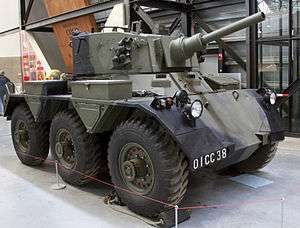 Alvis Saladin at the Royal Air Force Museum Cosford | |
| Type | Armoured car |
| Place of origin | United Kingdom |
| Service history | |
| Used by | See Operators |
| Wars | Six-Day War Vietnam War Aden Emergency Biafran War Dhofar Rebellion Lebanese Civil War Sri Lankan Civil War Second Sudanese Civil War |
| Production history | |
| Designer | Crossley Motors |
| Designed | 1954[1] |
| Manufacturer | Alvis |
| Produced | 1958–1972[2] |
| No. built | 1,177 |
| Specifications | |
| Mass | 11.6 t |
| Length | 4.93 m (16 ft 2 in) |
| Width | 2.54 m (8 ft 4 in) |
| Height | 2.39 m (7 ft 10 in) |
| Crew | 3 |
| Armour | Up to 32 mm (1.3 in) |
Main armament | 76 mm L5A1 gun with 42 rounds |
Secondary armament | 2 × M1919A4 machine guns with 3,500 rounds |
| Engine | Rolls-Royce B80 Mk.6A, 8 cyl petrol 170 hp (127 kW) |
| Power/weight | 15.5 hp/tonne |
| Suspension | 6x6 wheel |
Operational range | 400 km (250 mi) |
| Maximum speed | 72 km/h (45 mph) |
The Saladin also spawned an armoured personnel carrier counterpart, the Alvis Saracen.[2]
Despite the vehicle's age and dated design, it is still in use in a number of countries in secondary roles.
History
Development
Following the end of the Second World War, the British Army issued a requirement for a new, 6×6 wheeled armoured vehicle to replace the obsolete AEC Armoured Car.[4] Design work began in 1947 and a contract was awarded to Alvis Cars to build two prototypes for trials. The new armoured car was designated FV601A and armed with an Ordnance QF 2-pounder gun.[4] Alvis also proposed a much heavier fire support variant designated FV601B armed with a new 76 mm low-pressure gun.[4] Design work on the FV601B was subcontracted to Crossley Motors, which engineered and manufactured six pre-production models.[4] After further modifications by Alvis, the FV601C entered mass production in 1958 as the Alvis Saladin. Production of the FV601C and its variants continued at the Alvis factory at Coventry until 1972.[4]
A special variant known as the FV601D was developed for law enforcement agencies and internal security purposes; this model lacked a co-axial machine gun and had different lights and smoke dischargers.[4] The FV601D was only adopted by the German Federal Bundesgrenzschutz, which designated it Geschützter Sonderwagen III.[5] A Saladin was also offered with the same 30 mm RARDEN autocannon as found on the FV510 Warrior and FV721 Fox, but this model did not find favour with the British military or any export customers.[4]
The Federal Republic of Germany was the first country to express an interest in the Saladin, specifically the FV601D.[6] When production began, export customers such as Australia, Indonesia, and Ghana also placed large orders for the vehicle.[6] By the late 1960s, the British Army was beginning to dispose of second-hand Saladins as military aid for various Commonwealth member states.[6] The Saladin performed well on the export market but was not as successful as its primary competitor, the French Panhard AML-90, which was much more heavily armed, and cheaper.[3]
The Saladin shared many common components with the Saracen armoured personnel carrier, Stalwart high mobility load carrier and Salamander fire tender.
Service
British Army
The Saladin was used by B Sqn 16/5 Lancers during their defence of Nicosia airport in 1974 and subsequent armed recce operations under the banner of the UN.
Australia
The Royal Australian Armoured Corps (RAAC) modified Saladin turrets, and fitted them onto M113A1 tracked personnel carriers; this combination was known as the Fire Support Vehicle (FSV). However, the same name was also used for a subsequent vehicle, based on the turret from the FV101 Scorpion (and accepted by the RAAC in 1976). This was later redesignated the Medium Reconnaissance Vehicle (MRV).[7]
Oman
The Saladin was widely used by the Sultan of Oman's armed forces throughout the Omani Civil War, and saw extensive action during the period 1972 to 1976, supporting ground forces and on convoy patrol. Often crewed by British servicemen (loan soldiers) and Omani servicemen, the Sultan's Armoured Car Squadron consisted of an estimated 36 Saladins. They saw extensive action supporting troops from the British SAS, Oman Firqa, Oman regulars, and Iranian forces in their war with the Adoo. The squadron's vehicles were regularly attacked by Katyusha rockets, anti-tank mines, rocket propelled grenades, and light and heavy machine gun fire. Many vehicles were mined and repaired, and after the end of the war in 1976 the Saladin remained in service until the early 1980s. An unpublished account called The Tinned Equivalent was written in 1977, and details many of the events of that war.
Sri Lanka
The Ceylon Army received several ex-British Army Saladins following the outbreak of the 1971 JVP insurrection and were deployed counter-insurgency operations. These were used extensively by the Sri Lanka Armoured Corps in the 1980s in the early stages of the Sri Lankan Civil War, with its 76 mm gun being effective in countering insurgents. However, the wheeled vehicles had limited cross country capabilities and suffered damage from IEDs and RPGs in urban areas. In one case, in July 1987 during an insurgent attack on an army encampment in Jaffna, a Saladin was knocked out when an RPG entered through the drivers viewing portal, killing the driver and a sergeant inside.[8] Saladins remained in reserve status till the end of the war in 2009. It forms the tank crew pin of the Sri Lanka Armoured Corps.
Kuwait
During the 1990 invasion of Kuwait, Saladins were filmed on the streets of Kuwait City defending Kuwait against Iraqi forces.
Indonesia
The Indonesian Army (TNI AD) uses the Saladin for "KOSTRAD Cavalry Battalion", "KOSTRAD Recon Company" and Armoured Car Company. In 2014, the Indonesian Army confirmed that it was continuing to deploy the Saladin in active operations.[9] Indonesian Vice President Jusuf Kalla charged state-owned arms manufacturer Pindad with developing a modernization package for the Saladin in early 2016, indicating the armoured car would continue to remain in service for some time.[10] By the end of the year 16 Indonesian Army Saladins had been modernized by Pindad.[11]
Sudan
The Sudanese Army deployed Saladins during the Second Sudanese Civil War, some being captured by the SPLA.[12]
West Germany
Nearly 100 Saladins were exported to the Federal Republic of Germany as part of a British assistance programme for the fledgling Bundesgrenzschutz in the mid to late 1950s.[6] In German service they were designated Geschützer Sonderwagen III and utilised for border patrols.[5] All but 25, along with the entire German inventory of spare parts,[13] were later resold to Honduras as part of a $7 million deal negotiated through Honduran defence contractor Gerard Latchinian.[14] Honduran Saladins could be seen in the streets of Tegucigalpa in the 2009 coup against President Manuel Zelaya.[13]
Operators

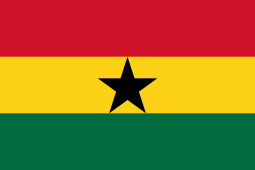
.svg.png)

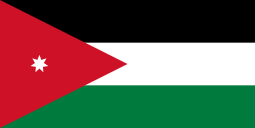
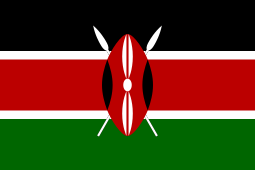
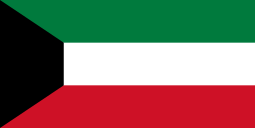

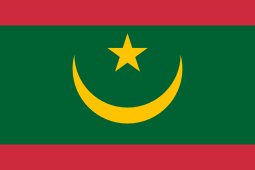

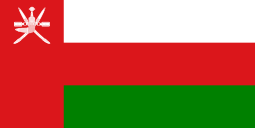


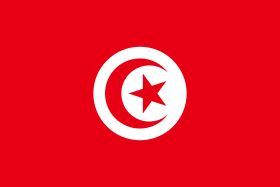
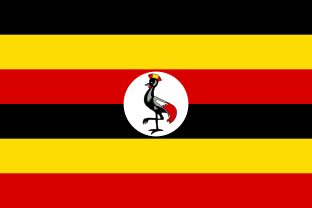
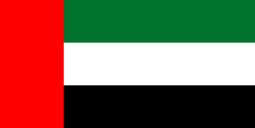

Former operators
.svg.png)
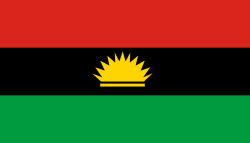

.svg.png)
.svg.png)


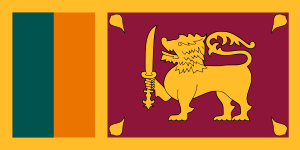

Surviving vehicles
.jpg)
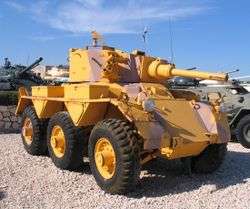
There is a Saladin on display as a gate guard at Episkopi Garrison, British Sovereign Base, Cyprus. It is dedicated to the memory of L/Cpl Nicholas Stokes, who died in a training accident in October 1992.[23]
A decommissioned Lebanese Army Saladin is currently part of the "Hope for Peace" monument in Yarze, Lebanon.
There is an FV 601 Saladin in Yad la-Shiryon museum, Latrun.
There is an Alvis Saladin at Sri Lanka Armoured Corps Training Centre, Anuradhapura – a gate guard.
Several Saladins are parked at a tank garage at The Indonesian Army 4th Cavalry Battalion.
There are three surviving Saladins in The Tank Museum, Dorset, England. One, in all over green, is displayed in the tank story exhibition. The second, in all over tan, is in operational condition and used in events. The third, in a tan and green camouflage pattern, is part of the museum's reserve collection and is stored in the vehicle conservation centre.
There is a Saladin in the Muckleburgh Collection, Norfolk, England. It can be seen running at various time during the year.
There is a Saladin on display at the Kent and Sharpshooters Yeomanry Museum at Hever Castle in Kent.
There is a Saladin at the Dunmore Park base of the B Squadron "North Irish Horse" SNIY Scottish and North Irish Yeomanry, an Army Reserve regiment.
There is a Saladin at the Aldershot Army Museum[24]
There is also a non-functioning Alvis Saladin displayed outside the Lebanese Army's military outpost in the mountain region of Baabda located between Hammana and Chbaniyeh.
An American college sports enthusiasts club in Knoxville, Tennessee, the "Big Orange Army" operates a Saladin painted orange as an advertising device.
There is another privately owned and fully operational restored 1959 Saladin AFV in Knoxville Tennessee. It has a live L5A1 76 mm main gun and a coaxial 1919A4 BMG with a Browning M2 Machine Gun top mounted on authentic US Mark 93 mounting hardware and gun shield plate.
There is a privately owned Saladin in the Hurst-Euless-Bedford area of Texas.
There is a Saladin as gate guardian at King Phraya Damrong Rajanupam Camp of the Royal Thai Border Police in Ubon Ratchathani, Thailand.
There is a privately owned Saladin in the Vancouver, British Columbia area of Canada.
There is a Saladin at the Inniskillings Museum in Enniskillen, County Fermanagh, Northern Ireland.
Numerous Saladin survive in Australia, one example is on display at the RAAC Memorial and Tank Museum Puckapunyal, Victoria.[25] and another complete operational, privately owned ex-British Saladin exists in the outer metropolitan region of Sydney. Many ex-Australian Army Saladins remain turretless because of the fitting of Saladin turrets on M113 carriers to make the Fire Support Vehicle (M113-A1 FSV) used in the Vietnam war. Two Saladins are on display at the Australian Armour and Artillery Museum located in Cairns, Queensland. One as the Gate Guard and the second (on display) is in running condition.
References
- Bull, Stephen (2004). Encyclopedia of Military Technology and Innovation. Westport: Greenwood Publishing Group. pp. 220–221. ISBN 978-1-57356-557-8.
- Christopher F. Foss (16 May 2000). Jane's Tanks and Combat Vehicles Recognition Guide (2000 ed.). Harper Collins Publishers. pp. 386–391. ISBN 978-0-00-472452-2.
- Middle East Economic Digest (1968). Collard, Elizabeth, Volume 12 pp. 131—173.
- Christopher F. Foss (1976). Jane's World Armoured Fighting Vehicles (1976 ed.). Macdonald and Jane's Publishers Ltd. pp. 156–157. ISBN 0-354-01022-0.
- Chant, Christopher (2013) [1987]. A Compendium of Armaments and Military Hardware. London: Routledge. p. 37. ISBN 978-1-315-88485-1.
- "Trade Registers". Armstrade.sipri.org. Retrieved 3 November 2015.
- "Archived copy". Archived from the original on 2 May 2016. Retrieved 20 February 2016.CS1 maint: archived copy as title (link)
- Wickremesekera, Channa (2016). The Tamil Separatist War in Sri Lanka. Routledge. ISBN 9781317293859.
- "Ribuan Prajurit TNI Berhasil Kuasai Asembagus | WEBSITE TENTARA NASIONAL INDONESIA". Archived from the original on 18 March 2015. Retrieved 6 October 2015.
- "Dari Saladin ke Badak – Tentara Nasional Indonesia Angkatan Darat". web.archive.org. 30 March 2016. Retrieved 10 April 2019.
- International Institute for Strategic Studies (IISS) (2016). The Military Balance 2016. London: IISS. pp. 257–471. ISBN 978-1857438352.
- "Sudan - Global trade, local impact: Arms Transfers to all Sides in the Civil War in Sudan" (PDF). Human Rights Watch Report. 10 (4): 24. August 1998.
- "La Caballería Blindada del Ejército de Honduras". web.archive.org. 13 September 2016. Retrieved 10 April 2019.
- Honduras Government Coup Plot. Latin American Monitor: Central America. 2 (1984) 1984–85 Volumes 1-4
- Richard F. Nyrop (2008). Area Handbook for the Persian Gulf States. Wildside Press. p. 270. ISBN 978-1-4344-6210-7.
... Between 1968 and 1971 Qatar received significant quantities of light armor from Great Britain. Included were nine Saracen six-wheeled, ten- to eleven-ton armored personnel carriers, ten Ferret five-ton scout cars, thirty Saladin eleven-ton armored cars ...
- Richard Lobban, Jr. (2010). Global Security Watch: Sudan (2010 ed.). Greenwood Publishing Group. p. 182. ISBN 978-0-313-35332-1.
- "Uganda: How the West brought Idi Amin to power | Links International Journal of Socialist Renewal". Links.org.au. Retrieved 6 October 2015.
- Archived 19 July 2009 at the Wayback Machine
- Jowett, Philip (2016). Modern African Wars (5): The Nigerian-Biafran War 1967–70. Oxford: Osprey Publishing Press. pp. 24–46. ISBN 978-1-4728-1609-2.
- Former Equipment of Iraqi Army. Archive.org. Retrieved 17 July 2018.
- "Revisita Cavalaria" (PDF). Biblioteca.exercito.pt. Archived from the original (PDF) on 20 December 2014. Retrieved 6 October 2015.
- "VIATURAS MILITARES HISTÓRICAS NO REGIMENTO DE CAVALARIA 6 - Operacional". Retrieved 10 April 2019.
- "Saladin Dedication Plaque Episkopi Garrison Cyprus". HMVF - Historic Military Vehicles Forum. Retrieved 10 April 2019.
- Archived 26 September 2013 at the Wayback Machine
- "Wayback Machine". web.archive.org. 17 October 2002. Retrieved 10 April 2019.
External links
| Wikimedia Commons has media related to FV 601 Saladin. |